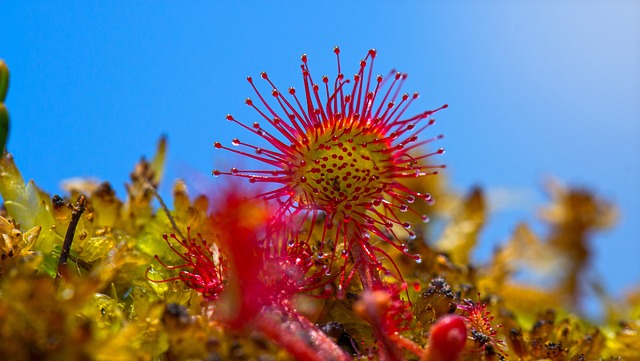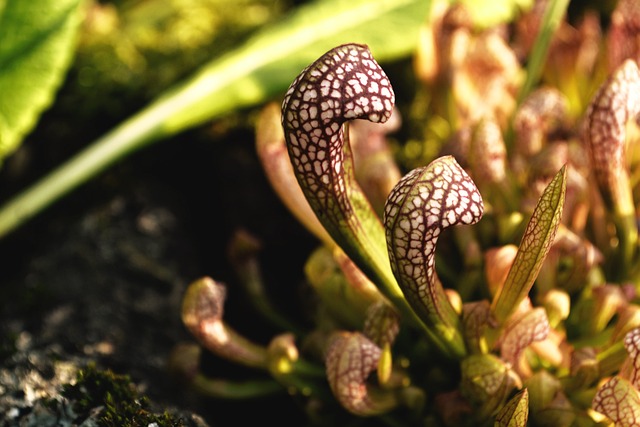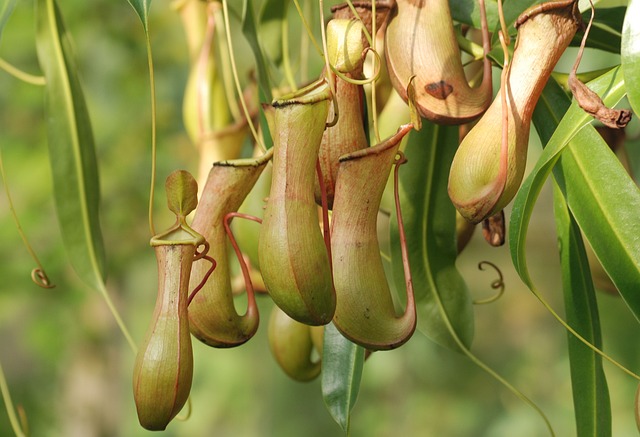Features of carnivorous plants
Carnivorous plants are plants that have evolved to capture and digest animal life forms. This does not mean that they can eat everything! These plants are also called insectivorous plants. In fact they mainly feed on insects and arthropods, but can feed like any other plant in the absence of prey.
Types of carnivorous plants
Carnivorous plants are very different from each other. Each of them has developed a different way for attracting and trapping prey. Some of them attract prey with bright colours while others prefer to emit a sweet scent.




The traps developed by carnivorous plants can be divided into five categories: sticky, snap, ascidium, creel and suction.
- As the name suggests, sticky traps consist of leaves covered in sticky mucilage that traps the prey. An example of this type of trap is the sundew.
- The snap trap (also known as a trap trap) consists of two modified leaves that close abruptly, trapping the prey and preventing it from escaping. The spokesperson for this category is the now famous Venus flytrap.
- The ascidium trap consists of a leaf with a peculiar jug or funnel shape inside which bacteria and digestive enzymes are contained. The sarracenia belongs to this family.
- The nessa trap is a trap hidden under the soil or under the surface of the water and consists of dense hair that pushes the prey towards the digestive system, trapping it. Genlisea belongs to this category.
- Plants that use the suction trap have developed a special vesicle, called a utricle, capable of creating a pressure vacuum and sucking the prey into the flower. The utricularia, a plant that uses this type of trap, has lovely flowers that vary from lilac to yellow to white.
growing carnivorous plants in pots
Carnivorous plants can be grown both indoors and outdoors. Some of them are easier to care for than others. Being such a diverse and dynamic group of plants, each category has its own needs and requirements. But the most common characteristics will be listed here as each plant is different and needs individual care.
They generally prefer an acidic soil, rich in peat and sand. The best peat is sphagnum peat, while sand should never be derived from a beach or limestone-based sand. The sand must be well cleaned before being used.
Some plants have a vegetative rest period that varies seasonally depending on the species. They prefer a bright location and not all of them like direct light as they cannot tolerate excessive heat.
Due to their nutrition, these plants thrive outdoors, but this does not mean that they cannot be kept indoors! However, if kept indoors, it is recommended to supplement with small insects provided by you. The species that are best adapted indoors are sarracenia and sundew, making them a good natural remedy against flies, mosquitoes and midges.
Watering
Carnivorous plants are particular in their water absorption; they do not tolerate tap water as it contains calcium, preferring instead distilled water or rainwater. However, as many of these plants are mainly native to marshy soils and some are aquatic or semi-aquatic, they prefer very moist environments.
For this reason, the use of a deep saucer filled halfway with water is recommended. It is preferable to top up the saucer and not to water the soil directly, as the water may end up washing away the mucilage, preventing the trap from springing.

Repotting
Transplanting should be done in spring, just before the plants come out of their vegetative rest, so that they can comfortably resume their development.
- Prepare the pot in which the plant will be moved, adding enough substrate to the bottom.
- Pinch the base of the plant between your thumb and forefinger and turn the pot upside down. In case of difficulty, tap on the bottom to help you.
- Carefully remove the peat from the roots and rinse them with lukewarm water.
- Place the plant in the new pot, taking care not to damage the roots
- Compact the soil well without pressing too hard. Add peat if needed.
In conclusion
You have read some basic information on these fascinating and mysterious plants in our article. Now you have the tools you need to choose your favourite type and try growing one!


 Italiano
Italiano